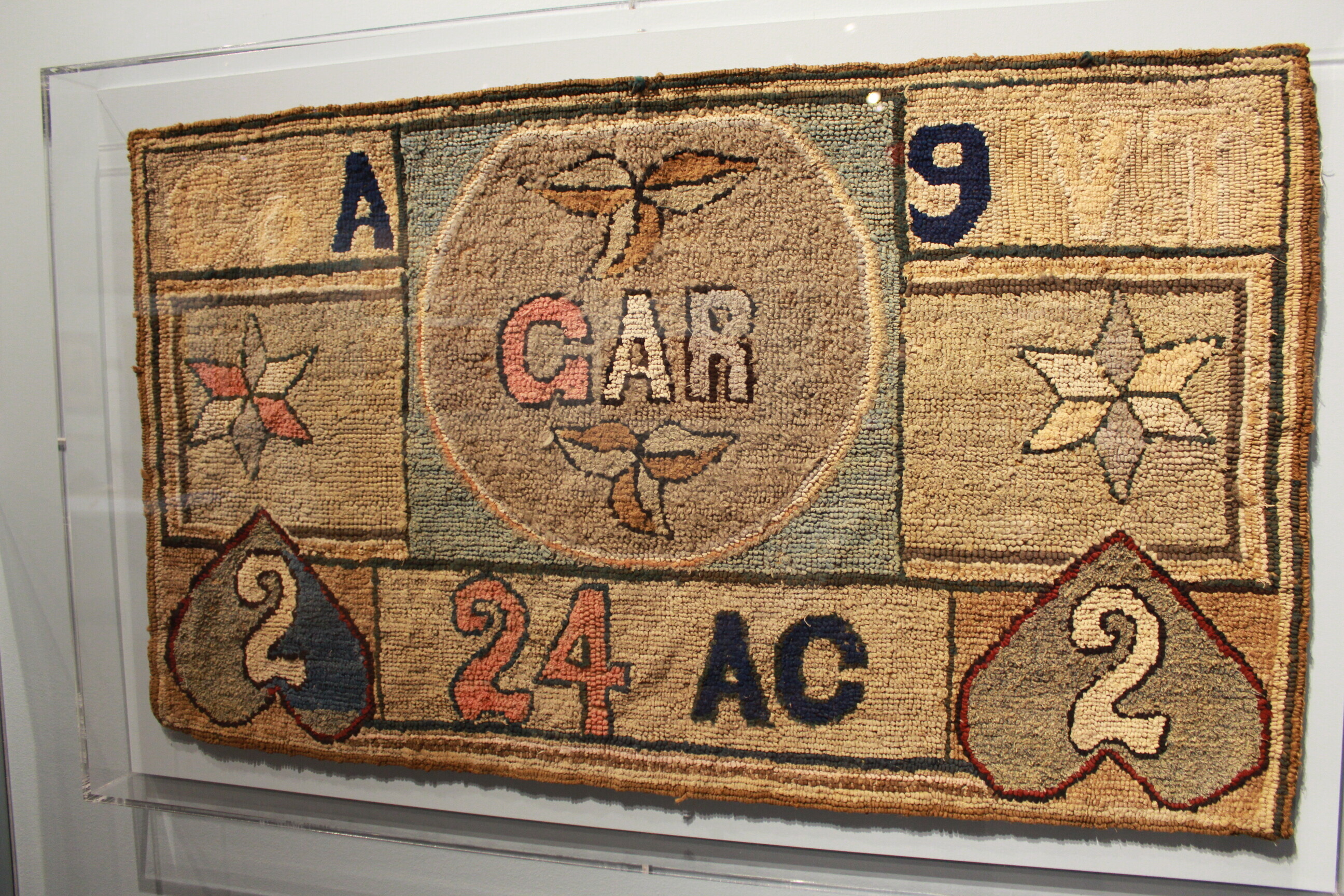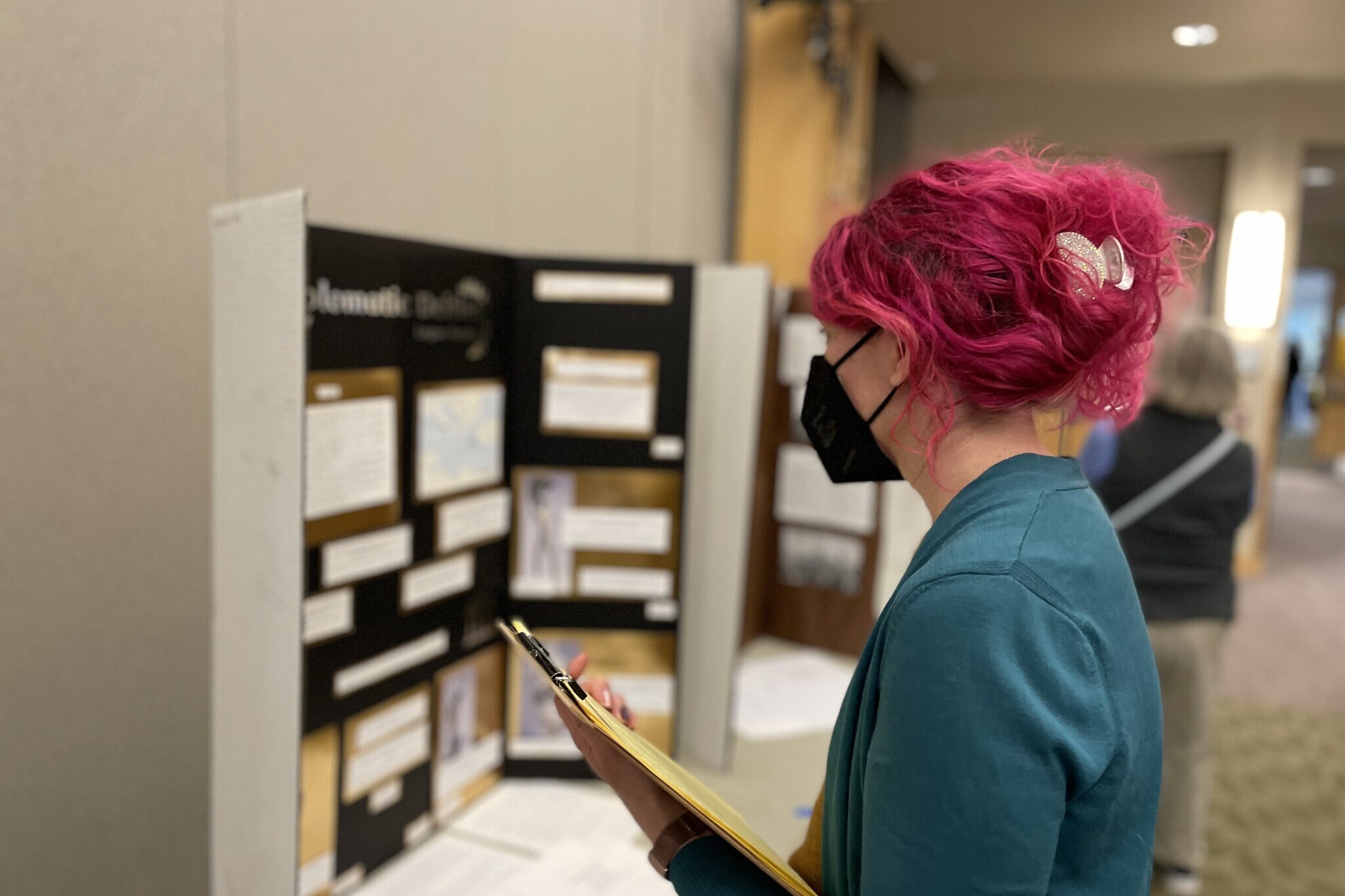Collections Spotlight: G.A.R. Rug

When wars come to an end, veterans in the United States have often formed fellowship organizations. In 2023, we’re familiar with groups such as the American Legion or Veterans of Foreign Wars (VFW), but in nineteenth century Vermont, the dominant fraternal veteran’s organization for Civil War veterans was the Grand Army of the Republic.
Founded in April 1866 by Dr. Benjamin F. Stephenson Illinois less than a year after the end of the war, the GAR – as it was most commonly known – brought together Union veterans of the Army, Navy, and Marines. At its peak in 1890, the organization boasted nearly 500,000 members and 10,000 posts nationwide.
The first GAR post in Vermont was organized in St. Johnsbury on October 23rd, 1868. GAR Posts usually assumed the name of a deceased local veteran or other important figure in the war, and thus, the St. Johnsbury post was known as “Chamberlain,” while Chittenden’s Post 116 (the last founded in Vermont) was named “A.P. Noyes.” At least one GAR post in Vermont was integrated, including Black veterans in community alongside the white veterans they had not been permitted to serve with during the war itself.
The GAR functioned as a connector organization for Civil War veterans and their families – auxiliaries included the Women’s Relief Corps, Ladies of the GAR, and Sons of Union Veterans. Members attended frequent local, regional, and national gatherings to honor the casualties of the Civil War, the service of veterans, and to advocate politically for a number of issues.
The Vermont Historical Society’s records of the Grand Army of the Republic are voluminous, including published books and pamphlets, original records, personal reminiscences and manuscripts, medals and ribbons from reunion gatherings, and more.
One particularly interesting object is a cotton and wool hooked rug that belonged to Harvey S. Powers of Lyndonville. Powers enlisted in Company A of the 9th Vermont when he was sixteen years old and was very active in his local post of the GAR after the war.
He was deeply committed to the GAR and belonged to several posts based on his location, including the Colonel Preston Post in Wells River and the Chamberlain Post in St. Johnsbury. At the end of his life in 1939, he was serving as the commander of the entire Vermont GAR – which had dwindled to few members by that time.
The rug’s maker is unknown – past researchers have speculated it was a female family member – but it is replete with symbolism that celebrates Powers’s service. At the top, though faded with time, are his regimental identifiers: “Co. A” and “9 VT.” At the bottom are upside-down hearts, the symbol of the 24th Army Corps, and “24 AC.” The hearts are blue, signifying the third division of the 24th Corps, and have the numeral 2 in them – for the 2nd Brigade of that division.
Nationally, the GAR dissolved in 1956 after the death of its last member. Its successor organization, Sons of Union Veterans of the Civil War, continues its work to document and honor the sacrifices of Union soldiers in the Civil War.
